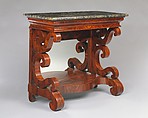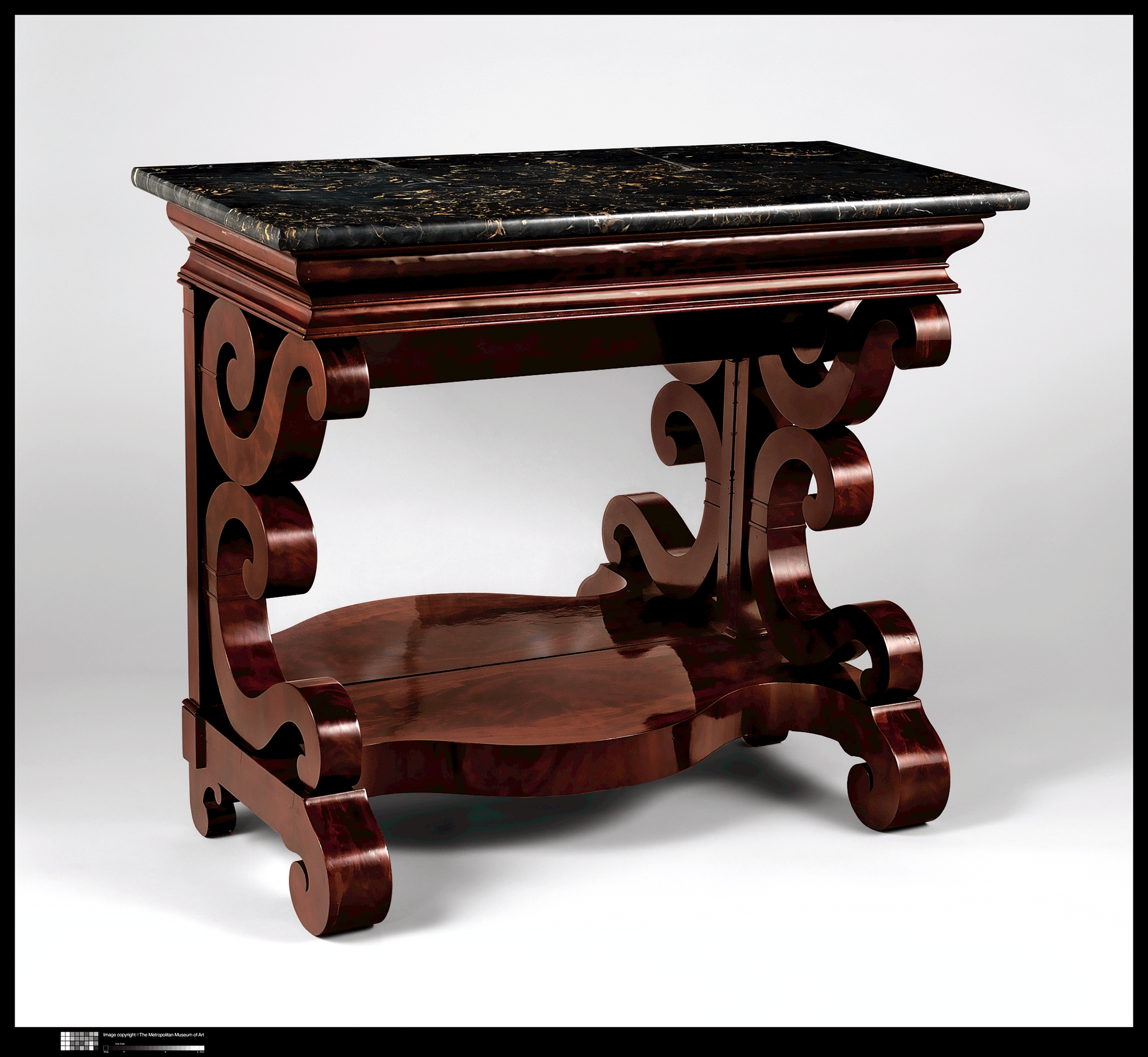Pier Table
Joseph Meeks & Sons American
By the early 1830s, neoclassical furniture designs featured simpler and bolder forms that were often finished in rich mahogany and rosewood veneers. New technologies significantly impacted furniture construction. The introduction of the circular veneer saw, for example, allowed cabinetmakers to slice veneers—often of imported exotic woods—much thinner than before, which made them easier to apply to curved surfaces. This pier table with its exuberant scrolled supports is an example of the fashionable furniture produced in New York City and disseminated throughout the nation, thanks in part to the circulation of printed designs and advertisements and rapidly expanding transportation systems.
Due to rights restrictions, this image cannot be enlarged, viewed at full screen, or downloaded.
This artwork is meant to be viewed from right to left. Scroll left to view more.






